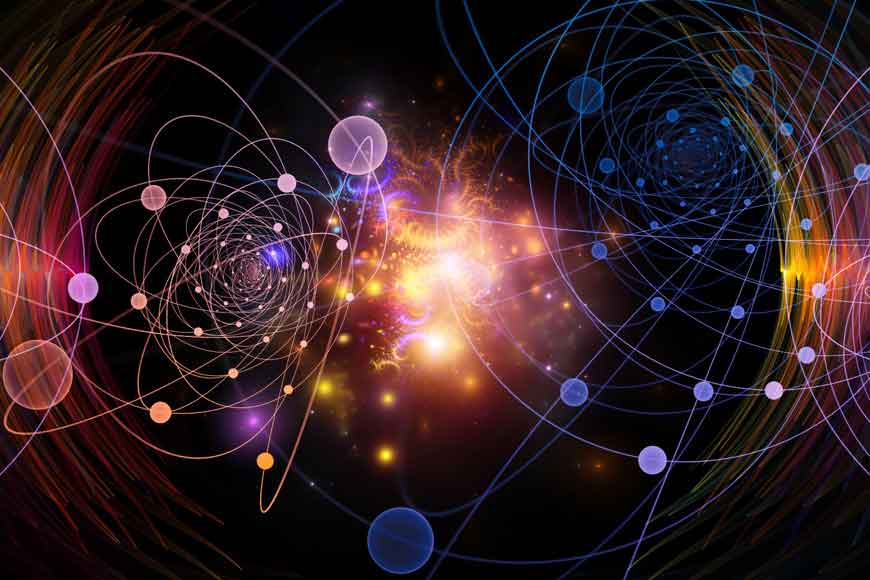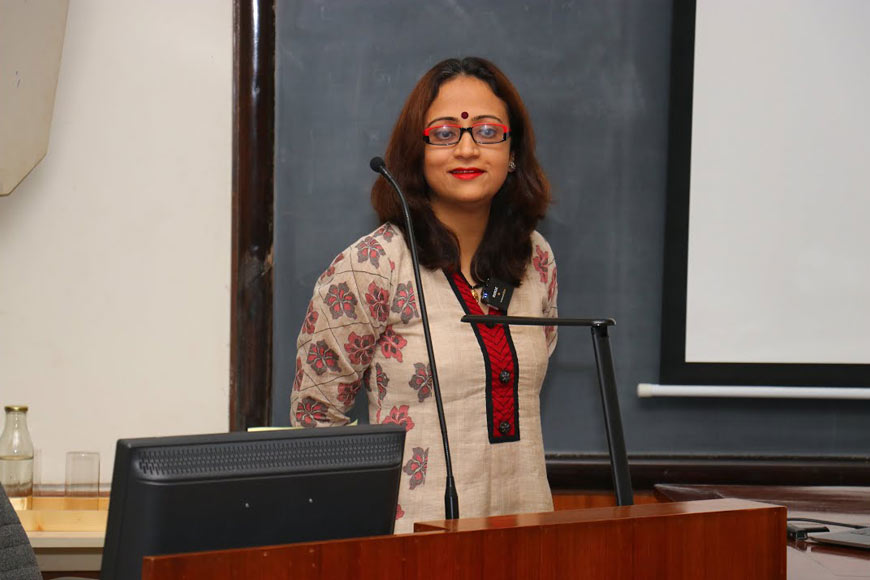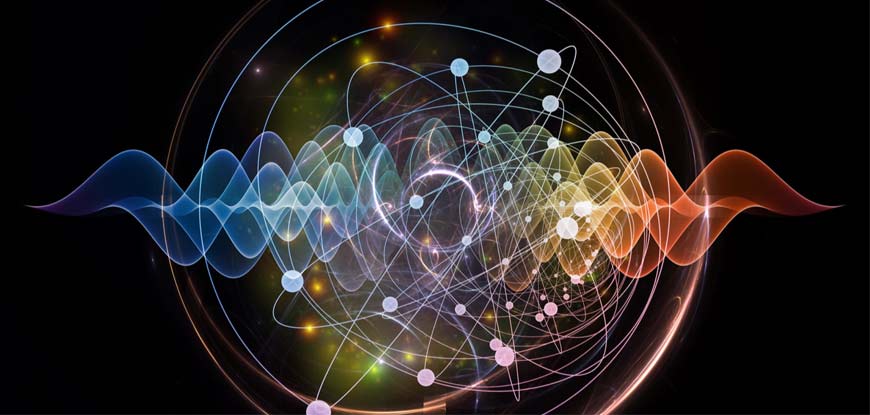Bengali scientists unravel the great ambiguity of Quantum mechanics - GetBengal story

Quantum mechanics is an area of physics focusing on quantum particles
Quantum mechanics is a branch of physics that deals with the behaviour of matter and light on the atomic and subatomic scales. It illustrates the essential methodology of physics and attempts to describe and account for the properties of molecules and atoms and their constituents — electrons, protons, neutrons, and other more esoteric particles such as quarks and gluons. These properties include the interactions of the particles with one another and with electromagnetic radiation (i.e., light, X-rays, and gamma rays). It has been enormously successful in giving correct results in practically every situation to which it has been applied. There is, however, an intriguing paradox. In spite of the overwhelming practical success of quantum mechanics, the foundations of the subject contain unresolved problems—in particular, problems concerning the nature of measurement.
At a fundamental level, both radiation and matter have the characteristics of particles and waves. The gradual recognition by scientists that radiation has particle-like properties and that matter has wavelike properties provided the impetus for the development of quantum mechanics. Influenced by Newton, most physicists of the 18th century believed that light consisted of particles, which they called corpuscles. From about 1800, evidence began to accumulate for a wave theory of light. British polymath Thomas Young (13 June 1773 – 10 May 1829), proved Newton wrong. Through his experiment, he showed that light is a wave and not a particle.
 Prof. Urbasi Sinha
Prof. Urbasi Sinha
Niels Bohr (1885–1962), considered the guru of quantum mechanics, propagated the orthodox view of quantum mechanics, also known as the Copenhagen view. Bohr said that light is both a particle and a wave. The quantum superposition principle implies that a particle entering an interferometer evolves by simultaneously taking both arms. 'Interferometry' is a measurement method using the phenomenon of interference of waves (usually light, radio, or sound waves). The measurements may include those of certain characteristics of the waves themselves and the materials that the waves interact with. In addition, the term interferometer is used to describe the techniques that use light waves for the study of changes in displacement. This displacement measuring interferometer is extensively used for calibration and mechanical stage motion control in precision machining.
By using two light beams (usually by splitting one beam into two), an interference pattern can be formed when these two beams superpose. If a non-destructive, minimally-disturbing interaction coupling a particle property to a pointer is implemented on each arm while maintaining the path superposition, quantum theory predicts that, for a fixed state measured at the output port, certain particle properties can be associated with only one or the other path. This phenomenon is known as the Quantum Cheshire Cat effect. It therefore, rejects the idea of hidden variables as quantities that cannot be measured. The indeterminacy observed in nature is fundamental and does not reflect an inadequacy in present scientific knowledge, according to the Copenhagen view. One should therefore accept the indeterminacy without trying to "explain" it and see what consequences come from it. Until recent times, this constituted a key quantum puzzle.
However, taking off from the Copenhagen view, scientists have unearthed one of the biggest mysteries of quantum mechanics. Recently, a group of seven scientists from India’s Bangaluru and Kolkata, and France demonstrated the way the quantum Cheshire Cat effect phenomenon works. The team of physicists included Professor Urvashi Sinha, Department of Light and Matter Physics at the Raman Research Institute in Bangaluru, along with three of her scholars, Suryanarayan Sahu, Saumya Ranjan Behera, and Sanchari Chakraborty. They collaborated with Professor Dipankar Holm and his student Som Kanjilal of the Center for Astro-particle Physics and Space Science at Bose Vijnyan Mandir, Kolkata, and Alex Matzkin, Associate Professor of the Theoretical Modelling department from the Laboratory de Physique at the University of Paris, to conduct a series of experiments and finally succeeded in removing the veil of mystery and resolve the enigmatic problem.
These seven scientists have been researching and conducting experiments ceaselessly to solve this puzzle, and finally, their hard work paid rich dividends and they succeeded in their endeavour. In experiments they conducted at the Raman Research Institute in Bangaluru, they showed that light particles, photons (the smallest possible packets of electromagnetic energy), and light waves (light radiating from a source in waves), both work simultaneously. The quantum superposition principle implies that a particle entering an interferometer evolves by simultaneously taking both arms. If a non-destructive, minimally-disturbing interaction coupling a particle property to a pointer is implemented on each arm while maintaining the path superposition, quantum theory predicts that, for a fixed state measured at the output port, certain particle properties can be associated with only one or the other path. However, the seven-member team of scientists reported the realization of this prediction through joint observation of the spatial and polarization degrees of freedom of a single photon in the two respective arms of an interferometer. Their paper titled, 'Unambiguous Joint Detection of Spatially Separated of a Single Photon in Two Arms of an Interferometer' was published in the journal, ‘Communications Physics’, a major publication of Nature, the world's leading multidisciplinary science journal.

The scientists at the Raman Research Institute used interferometers, a very simple device widely used in many quantum mechanics experiments. In 2013, Israeli physicist Yakir Aharonov and his colleagues showed the possibility of separating an object from its own properties using the concept of "quantum weak measurement," thereby supporting the Quantum Cheshire Cat (QCC) effect theory. In quantum physics parlance, separating an object from its own properties is interestingly called the Quantum Cheshire Cat (QCC) effect — drawing inspiration from Lewis Carroll’s famous book "Alice in Wonderland", in which Alice is wonder-struck by a magical cat that appears and disappears at will, leaving its weak grin behind. Since then, physicists from across the globe have been engaged in witnessing the QCC effect for a decade now, but the opportunity seemed to elude them until Professor Urvashi Sinha and her team finally succeeded in lifting the veil and uncovering the mystery.
Professor Holm’s mentor, Dr. Shyamal Sengupta of Presidency College, was a brilliant physicist who pioneered research work on the foundational problems of quantum mechanics and remains an inspiration for generations of physicists in India. He encouraged his students to take up fundamental research on quantum problems, as he believed this was going to revolutionize every sphere of human life in the future.
Quantum mechanics, the counterintuitive brainchild of early-20th-century physics, is poised to take over the technologies of the 21st century. Exploiting the physics of Einstein and his successors, quantum computing has the potential to revolutionize problem solving and information processing. The science has evolved from mathematical speculation to multi-billion-dollar hardware development projects that, one day soon, could model complex systems, decrypt sensitive data, and recognize deep patterns in living systems. Meanwhile, quantum physics effects are also contributing to the development of new materials with striking properties that can be exploited for innovations in energy-management technologies, light-based devices such as solar cells and light-emitting diodes (LEDs), and platforms for quantum information processing.











